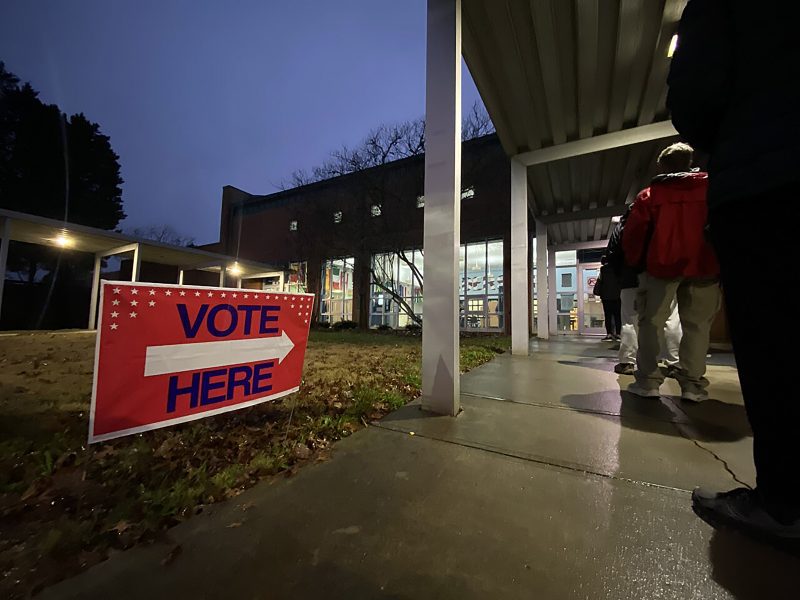Donald Trump has one last chance at redemption for his fumbling, deflated 2022 political efforts. Should Herschel Walker prevail in Georgia’s runoff contest for the U.S. Senate on Tuesday, Trump can at least claim that one of his pilloried endorsees managed to crawl past the finish line — albeit only after coming up short in November.
Eager to prove his political heft, Trump’s team sent out a link to an article from a right-wing website arguing that early voting numbers from the state favored Walker over incumbent Sen. Raphael G. Warnock (D). It argues that Walker is particularly well-positioned, given who has already voted.
From the article:
This is very instructive as a way not to analyze early-vote numbers from Georgia — or, really, from anywhere else. The reality is that early voting is likely to offer an advantage to Warnock, not Walker, albeit one of hard-to-predict size. The results of the election, then, will come down to how big Walker’s advantage is in the Election Day vote itself.
Let’s first address the assumptions in the quoted paragraph above. It suffers from the same erroneous assumption that a lot of Trump’s own post-2020 analyses did: that the overall support for a candidate would be mirrored in different voting methodologies. What we’ve seen since 2020, though, is that this isn’t how it works in Georgia.
Consider the results of the runoff Warnock won in January 2021 and of the initial vote last month. In both cases, Warnock earned more early votes than his Republican opponent. In 2021, he won the early — meaning, early in-person and mail-in — vote by about 14 points. Last month, he won it by 10 points. But then Election Day came, and his opponents won those votes by 13 and 16 points respectively. Since early votes make up so much more of the votes cast, Warnock got more votes in both cases.
Washington Post analysis of the early vote data (as of Sunday) shows that about a third of the votes already cast are from Black Georgians, two-thirds of whom are over the age of 50. This is a group that traditionally votes heavily Democratic. Twice as many older voters are White, but as the figures above suggest, they are more likely to vote Democratic than Whites who cast ballots on Election Day.
During the 2020 election, we saw a partisan divide on early voting open up, with Trump’s insistence that mail ballots were rife with fraud — which wasn’t true — disinclining his voters to cast ballots that way. In the 2021 runoff in Georgia, certainly thanks in part to the state of the pandemic at the time, more than a million ballots were cast by mail. An additional 2 million were cast early in person. In November, the number of mail ballots dropped significantly, to less than a quarter of the number the year prior. The most recent early vote data suggest that both in-person and mail ballots are down from November, but those numbers will increase as votes are counted.
It is important that more of the vote is made up of early, in-person voting because that method has less of a partisan divide than mail ballots — even as the divide on mail ballots fell from 2021 to 2022.
You can see that below. Taking the results in each county from the 2021 runoff and last month, there’s a clear correlation between a county’s vote in the runoff and the percentage of votes cast by mail — the dots, representing Georgia’s counties, line up from upper left (lots of mail ballots, heavily Democratic) to lower right (few mail ballots, heavily Republican). In 2022 (the graph at lower left), the correlation between mail ballots and election results was much weaker.
On the right side is voting conducted early, in person. In both 2021 and 2022 it looks like a big cloud — there isn’t much correlation between votes cast this way and how those voters vote. The difference lies in the number of votes cast; a lot of populous counties gave Warnock big vote margins.
The point, though, is that it’s fraught to draw assumptions from early vote data about the outcome of the election. If Walker were to win the early vote by 40 percentage points, as the article shared by Trump suggested? Well, yes, he’d win the election. But that’s not going to happen. Instead, it’s likely that Warnock will emerge with an advantage in ballots cast early, albeit one well below 40 points. Then it’s up to Walker to eat into Warnock’s lead in votes cast on Tuesday.
If you are not clear on how Trump’s insistence that Walker has the election in the bag aids the effort to ensure people vote, you are probably not alone.
Lenny Bronner contributed to this report.

